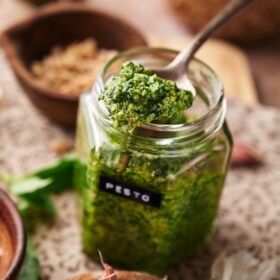This classic Italian Homemade Basil Pesto Recipe is fresh, full of flavor, and ready in minutes! It’s delicious and made with just 7 simple ingredients including fresh aromatic basil, garlic, rich olive oil, salty Parmesan cheese, and toasted pine nuts. Bright and nutty, this pesto is perfect tossed with pasta, on pizza, or used as a spread. You can make this easy versatile recipe in a snap with a food processor or the old-fashioned way with a mortar and pestle.
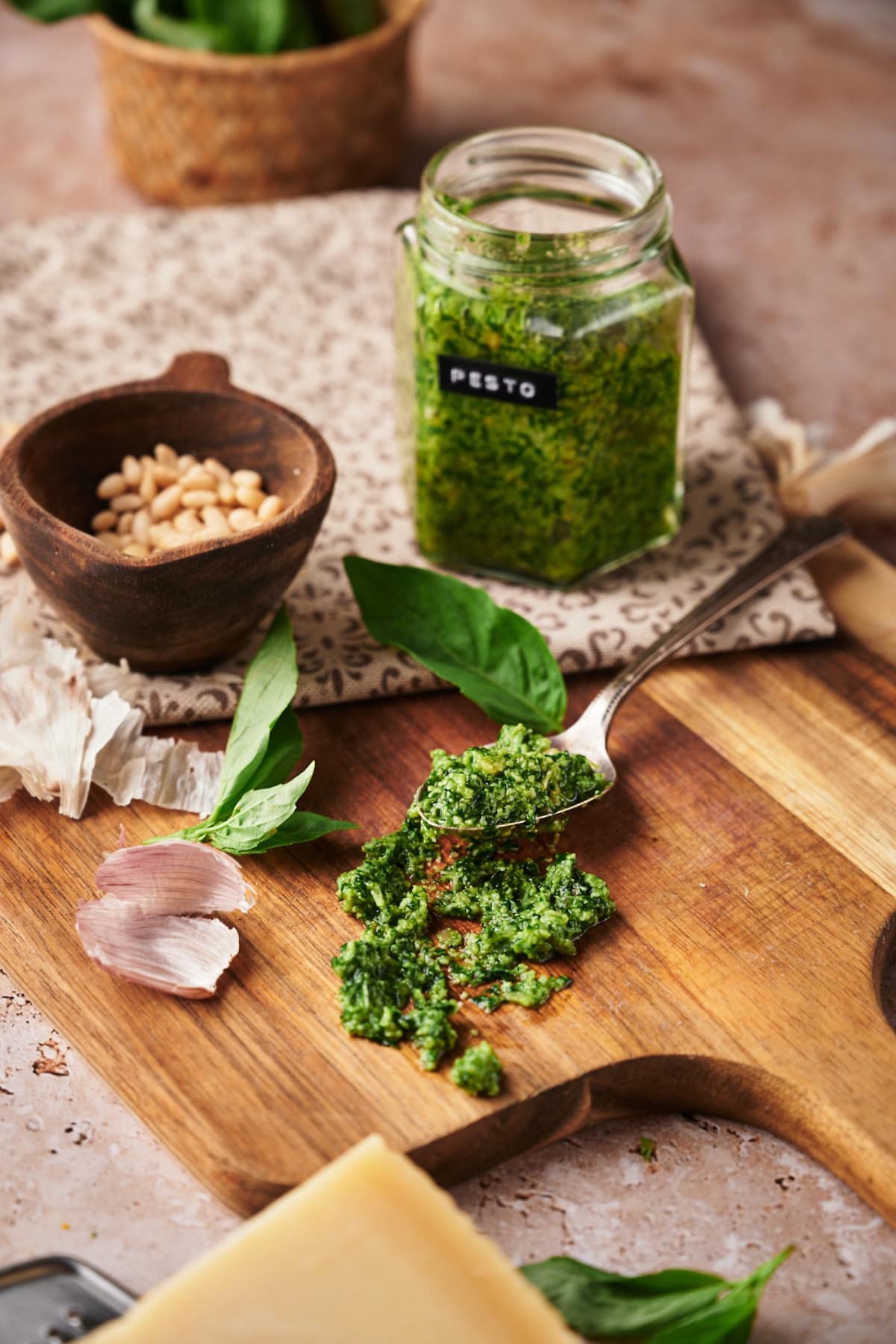
The origins of pesto actually date back to Roman times when a paste called “moretum” was made by crushing and pounding garlic, herbs, and cheese together. But the popular vibrant green herby basil pesto sauce that most people today associate as pesto originated in the mid-1800s in Genoa, which is the capital city of Liguria, Italy.
This type of pesto that we all know and love is also called pesto alla genovese. It’s essentially an uncooked sauce composed of basil, garlic, olive oil, hard Italian cheeses, and pine nuts that have been blended into a delicious paste with incredible flavor.
In fact, the word pesto comes from the Italian word “pestare” which means to crush or pound. Traditional pesto was made for centuries by pounding the ingredients into a paste by hand with a mortar and pestle. Yet these days, most pesto is made using a food processor.
You’ll see classic basil pesto as the star ingredient in many different recipes like trofie al pesto, lasagne al pesto, and corzetti pasta with pesto. But you can also mix it into pasta sauce, spread pesto on homemade pizza, or on the bread of your favorite turkey sandwich. It’s a really versatile sauce that will elevate any dish and can be used on almost anything.
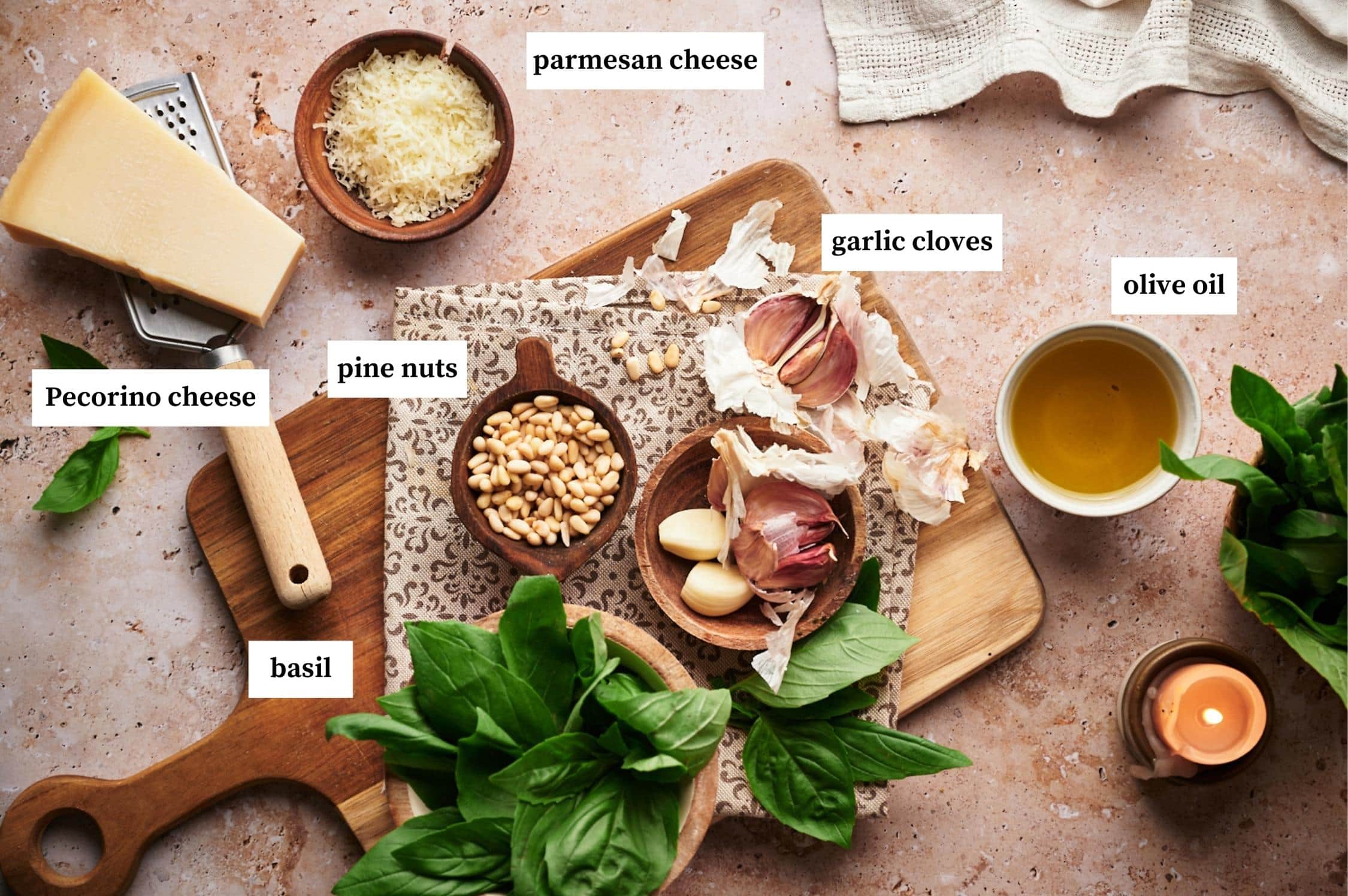
To begin, make sure the bowl of your food processor isn’t warm. If it is, put it in the fridge to chill for a minute. Next, add the basil, garlic cloves, pine nuts, and parmesan cheese into the bowl of the food processor (photo 1). Then pulse everything together for a few seconds until the ingredients are coarsely chopped (photo 2).
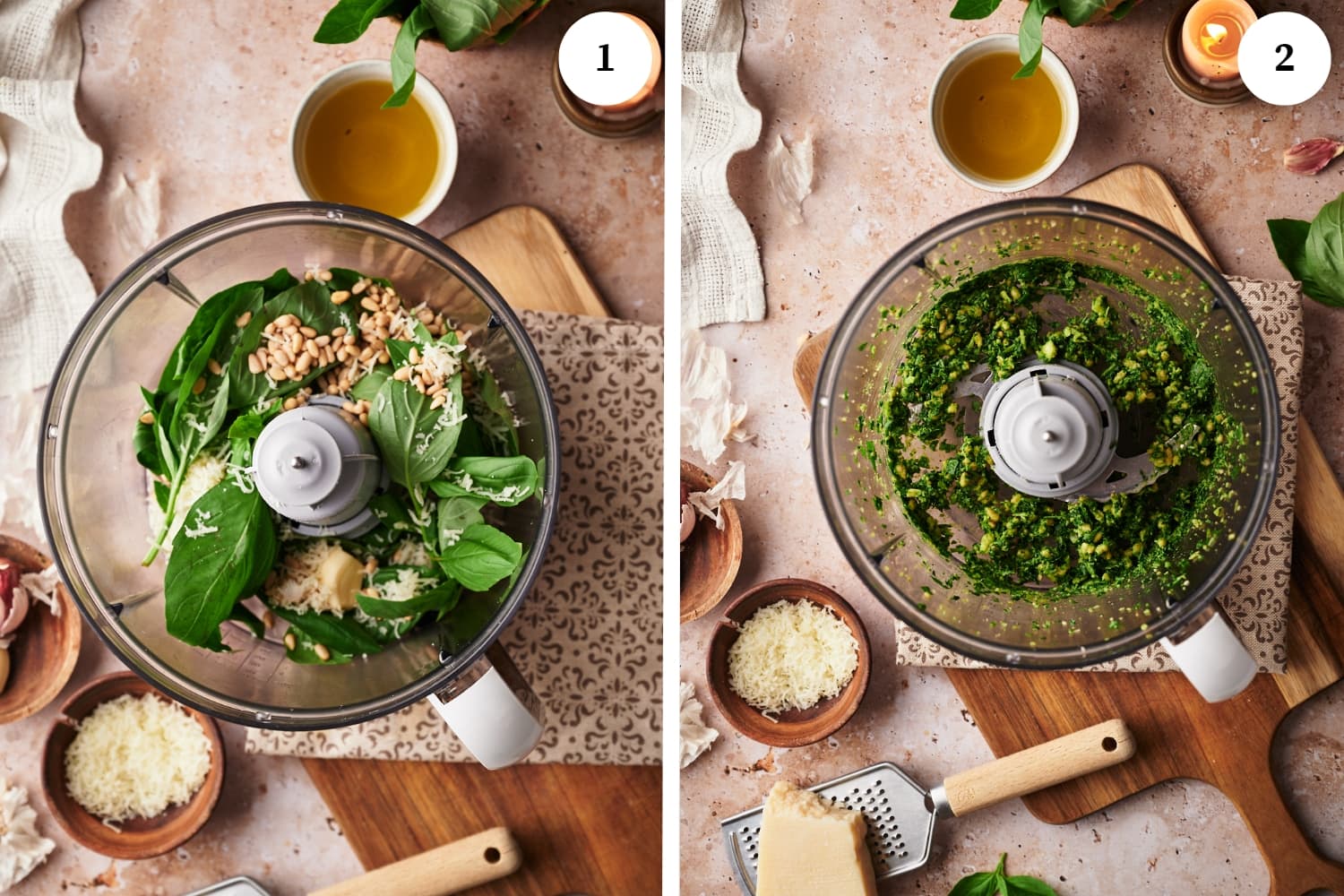
Next, add the Pecorino cheese to the food processor (photo 3). Then pulse everything together once more until the pesto is finely minced.
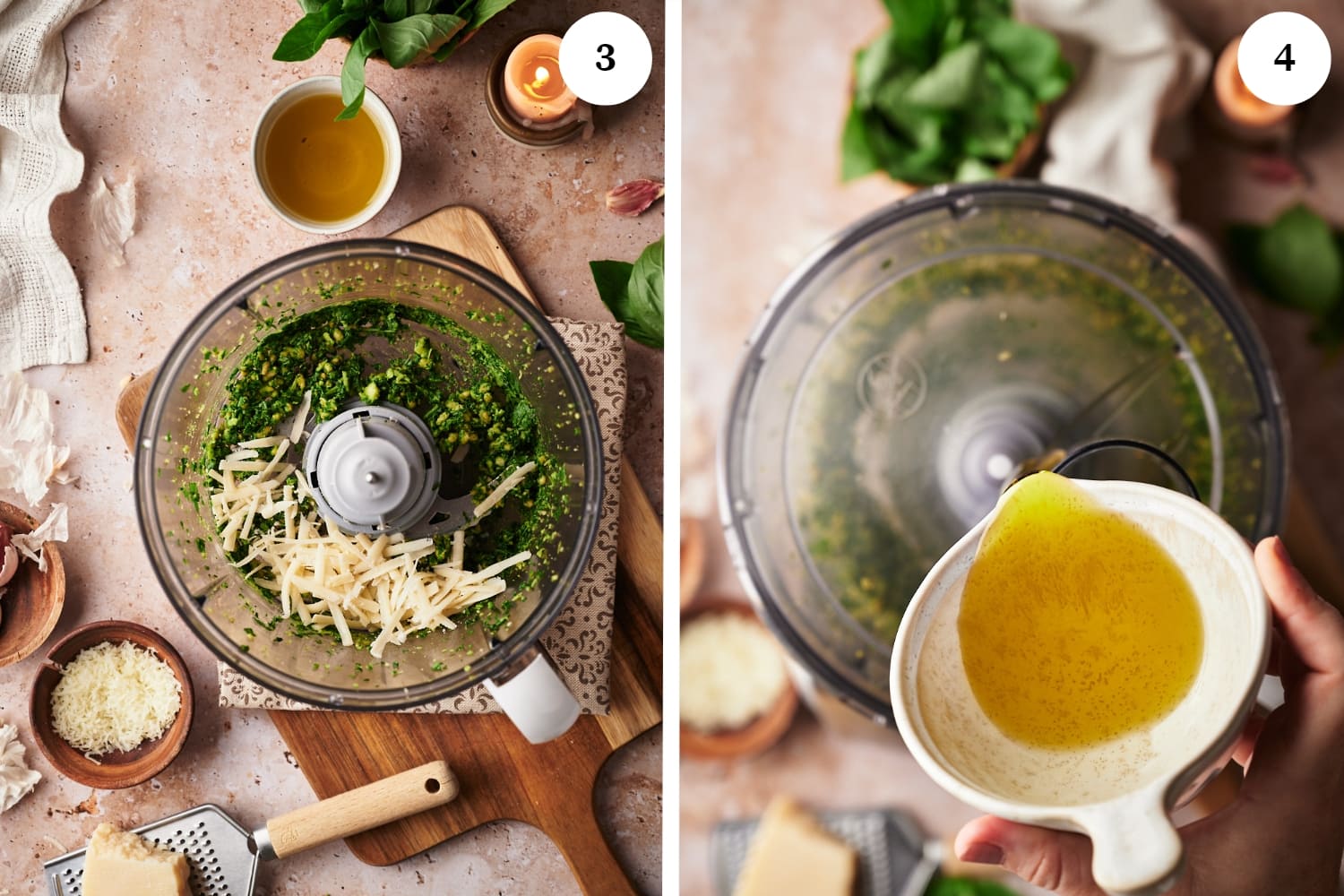
For this next step, you need to take your time. While the food processor still running, drizzle in the olive oil into the pesto in a slow and steady stream (photo 4). The pesto will start to come together as it becomes smooth and creamy (photo 5). Then when the basil pesto is done, taste it and season it with salt if needed. You can add a bit of black pepper too if you like.
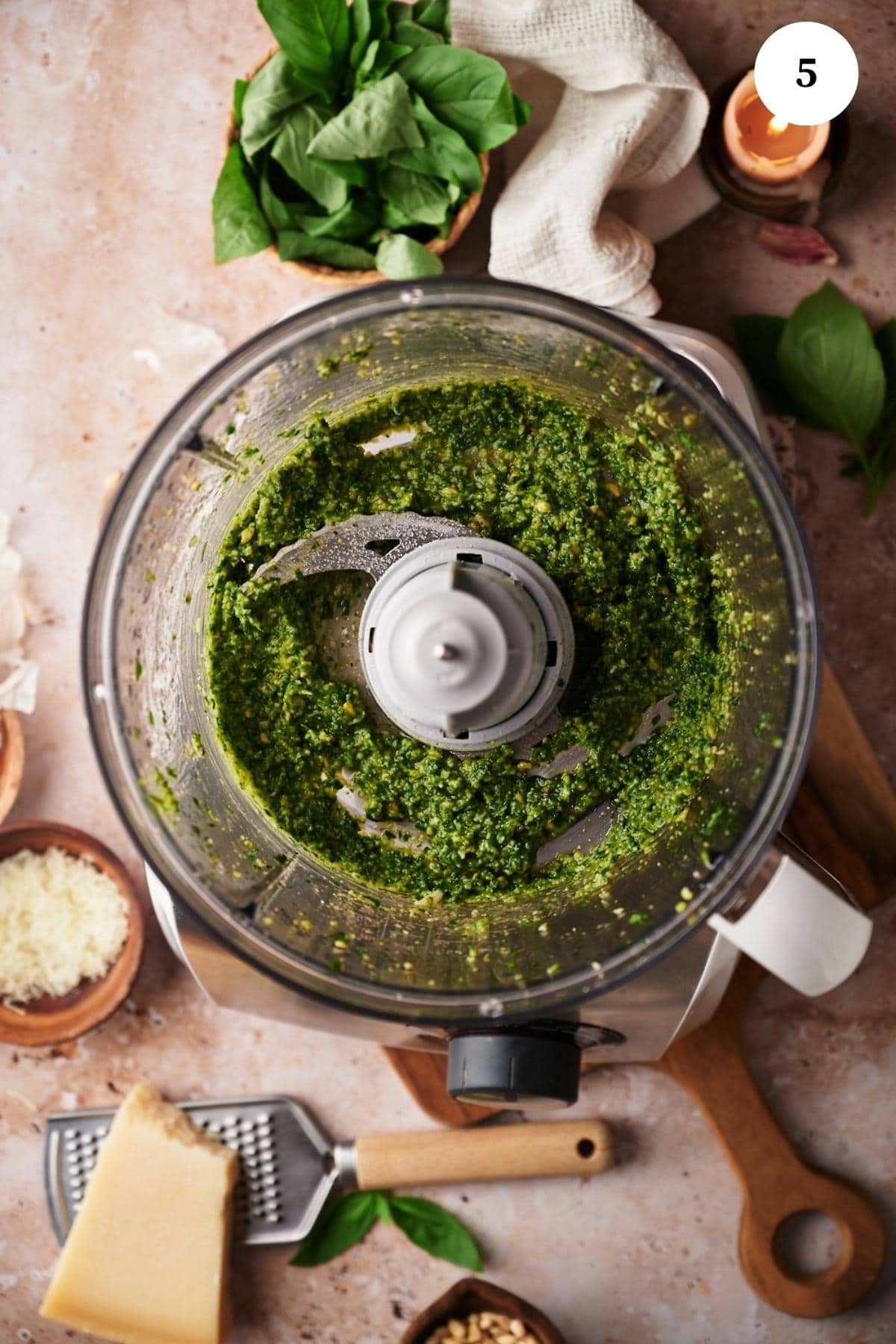
To start, you need to grind the fresh garlic cloves with a dash of salt with the mortar and pestle. You can stop once it becomes a chunky garlic puree (photo 6).
Next, pound the basil leaves into the ground garlic in batches (photo 7). Continue grinding until a vibrant green sauce similar to a paste forms. Then add the pine nuts (photo 8) and pound the mixture once again until everything is well combined.
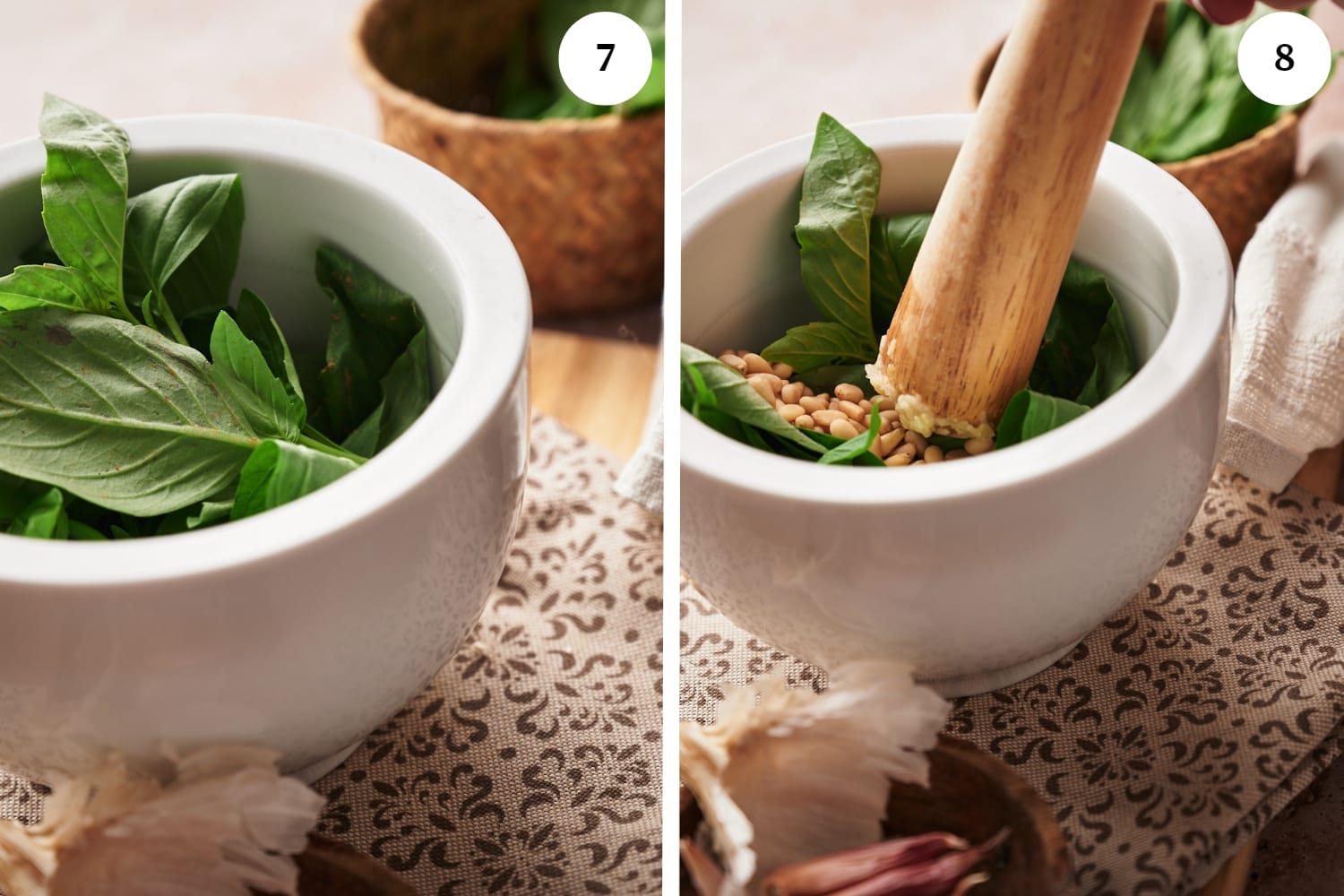
First, add one-third of the cheese and pound it into the pesto. Then repeat the process two more times with the other two-thirds of the cheese. With each addition, you need to fully grind the cheese into the pesto before adding the next third (photo 9).
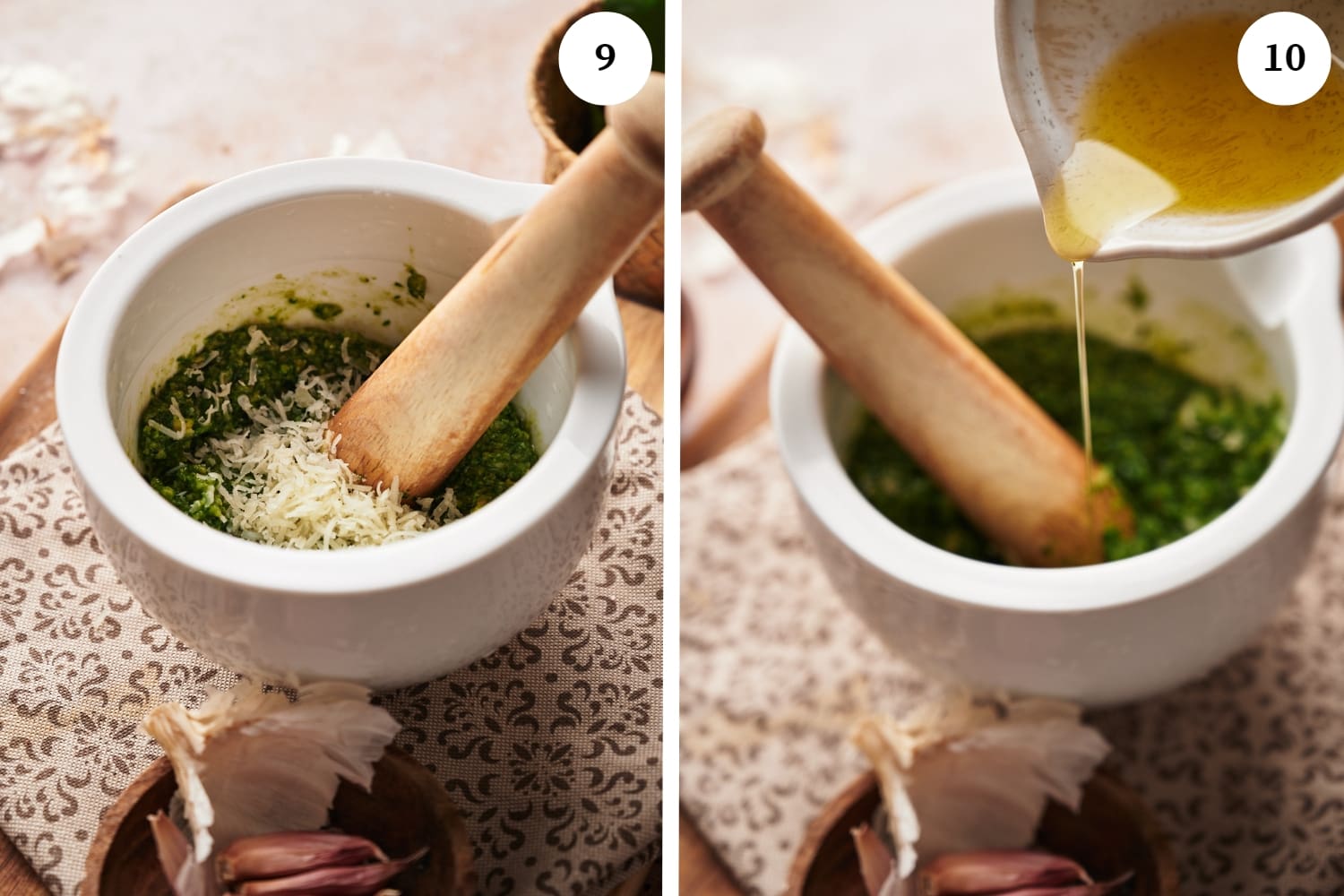
To complete the pesto, drizzle a tablespoon of olive oil at a time into the pesto and then grind it into the sauce (photo 10). This means that you need to repeat this process 8 times because there are 8 tablespoons in ½ cup. The basil pesto should be smooth and creamy once all the olive oil has been pounded into the mixture.
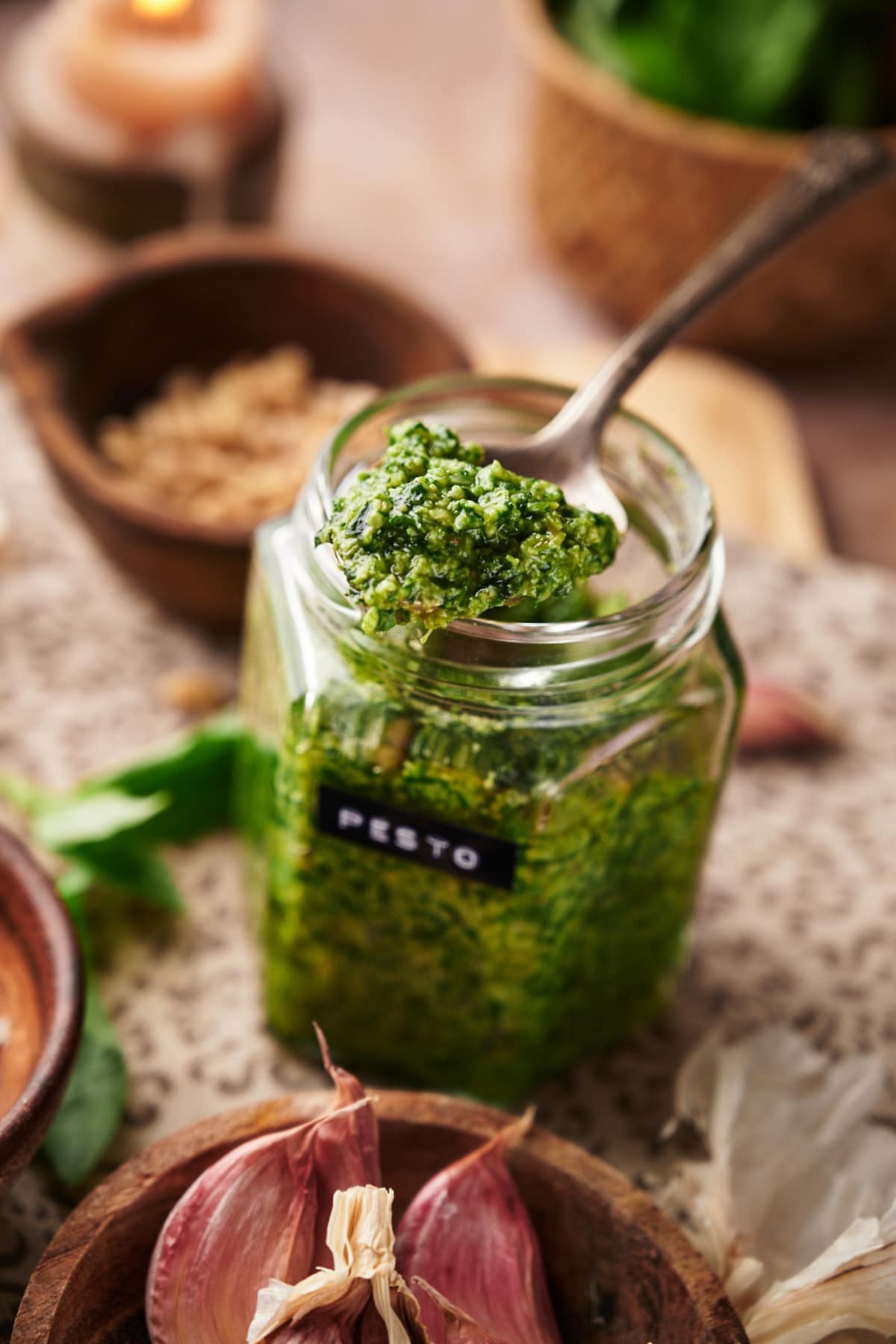
It’s important to note that not all basil pesto recipes are the same. The term pesto can refer to other variations of the sauce. This alla genovese pesto recipe is just one of many. For example, some variations such as agliata substitute walnuts for the pine nuts. Others like Sicilian pesto Trapanese use almonds and include tomato as well. There is a spicy version with grilled bell peppers called pesto alla calabrese. And if you want to jump countries the French have a sauce very similar to a nut-free pesto called pistou, which is typically made with just basil, garlic, and oil.
And because pesto is such a versatile sauce this means that you can easily customize your homemade pesto. As long as you follow the pesto recipe and keep the ratio of the herbs, nuts, and oil about the same, your pesto will turn out perfect.
Here are some of my favorite variations:
If storing in the fridge, you should put your homemade basil pesto in a jar with a tight lid and then cover it with a layer of olive oil to prevent oxidation. This will keep the pesto a bright green color.
However, if you want to freeze your pesto, you can put it in an airtight container and then let it thaw out overnight before using. Or better yet, you can pour the pesto into ice cube trays, let it freeze, and then pop the cubes out of the ice trays into a freezer bag. Then you have little pesto cubes that you can toss into hot pasta or creamy risotto.
Homemade pesto sauce will keep in the fridge for about 6 days and in the freezer for up to 6 months. Unlike store-bought pesto, homemade pesto does not have any preservatives in it so it’s best to freeze whatever leftover pesto you have after about a week.
In cooking, to emulsify means to combine two ingredients that typically do not mix together easily. For example, oil and water. So for this classic pesto recipe, we are talking about the olive oil and the water in the basil. This is why the oil must be added slowly.
If your pesto has a bitter taste this can mean that your olive oil has expired. But it can also mean that you blended the basil too long in the food processor. Basil will eventually break down and turn bitter.
